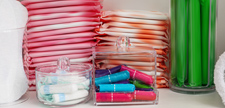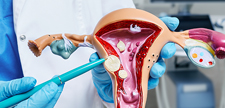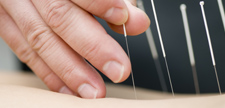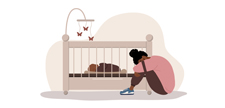
We all have an organ called the pancreas. The pancreas produces a hormone called insulin. Insulin acts to regulate your blood sugar levels, making sure that they don’t get too high and that your cells get all the energy they need! However, there are many changes that happen with the body during pregnancy; sometimes your pancreas is not able to produce enough insulin to maintain a normal blood sugar. This continually high blood sugar is called gestational diabetes.

Menstrual health is an essential aspect of women's health that often goes underappreciated. For immigrant and refugee women in particular, managing menstrual health presents unique challenges. Cultural differences, language barriers and limited resources all contribute to these challenges.

Pregnant people in the United States have many options when it comes to planning what their labor and delivery experience looks like. Common options include home delivery, various types of delivery centers and the hospital. In the United States and other western countries, hospital deliveries have largely become the default. Each option comes with its own benefits and downsides.

Period poverty is the lack of accessibility or affordability of menstrual hygiene tools and educational material, such as sanitary products, washing facilities and waste management.

Unfortunately, it’s not just the availability of abortion care that will impact the lives of birthing people in these states. After Dobbs, states with abortion bans in place experienced a decrease in the number of MD applicants for residency programs located in those states, particularly OB/GYN programs.

Uterine fibroids, also known as leiomyomas, are the most common benign (noncancerous) tumors made of smooth muscle and connective tissue that develop in the myometrium layer of the uterus. They are the most common pelvic tumors among women of reproductive age, affecting more than 70% of women worldwide.

Pregnancy is a unique period in a person’s life. During these 40 weeks, the body goes through many changes and adjustments to nurture the fetus growing inside. One common complaint, present in about 50-80% of pregnant patients, is low back and/or pelvic pain. As the patient gains weight, the center of gravity is shifted forward which increases the forces applied to the lower back. Back pain has also been correlated with increased levels of relaxin which is a hormone produced by the corpus luteum and uterine decidua.

Many mothers would agree that the process of childbirth is not an easy experience. The body goes through physical, psychological and emotional changes. One of the most common problems that women face after childbirth is postpartum depression (PPD).

The Depo-Provera shot is a very common form of birth control that contains the progestin medroxyprogesterone acetate. This hormone mimics progesterone, binding to the progesterone receptor and essentially functioning the same way as the hormone. As a form of birth control, there are several functions of this injection. It works to prevent ovulation, preventing the release of an egg from the ovary.

Pregnant women are at risk of developing another type of depression called postpartum depression (PPD). The symptoms for postpartum depression and major depressive disorder are the same, with the exception that postpartum depression develops within a year of giving birth or within the last trimester of pregnancy.

Intrauterine devices (IUDs) are an increasingly popular choice for contraception. There are two types: hormonal (which contain progestin, a form of progesterone) and non-hormonal, made with copper. You can discuss with your health care provider which one is best for you.

The health benefits of breastfeeding for both mother and infant have been well-touted for years. Based on these undeniable benefits, the American Academy of Pediatrics recommends exclusive breastfeeding for the first six months of life and continuation of breastfeeding until two years of age or beyond, a recent revision from the previous recommendation of continued breastfeeding for the first year of life or longer.